I always thought Seattle was unique in having raised the level of the city’s streets in the past and that the Seattle Underground Tour was the only tour of the historic underground that once upon a time was the street level of a city. I recently found out it was not the only city where our predecessors paid no attention to the tides and built too close to the water. Or perhaps built there before the introduction of indoor plumbing and then found the mix of indoor plumbing without sewers in a tidal area where the water is as likely to bring things back as take them out unlivable. Rebuilding farther from shore would seem like the simple thing to do, but considering at least one other city also filled in the streets and raised the level of their town perhaps moving inland was not an acceptable solution.
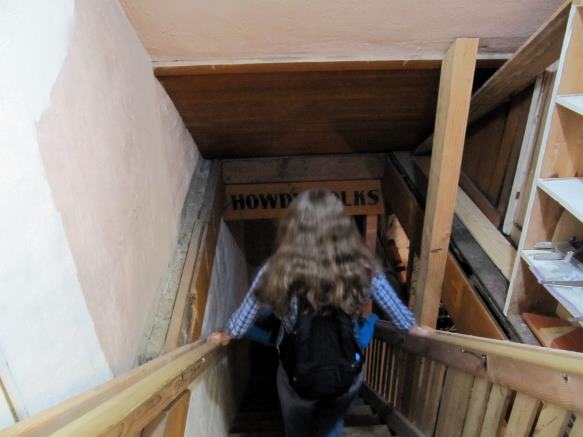
stairway in a shop leads under the building, which was raised on poles to match the new street level
Port Angeles started their town-raising project in January of 1914 and a series of lucky circumstances led to finishing in June of the same year rather than the projected three years later. The Farmer’s Almanac predicted that as an extremely mild winter for that era (at the time normal winters stayed frozen and snowy for several months.) The mild weather meant working straight through the winter months, giving the project a boost right in the beginning. Next came the completion of construction of the Elwha dam, meaning electricity came to the area. In addition to improving the tools available to do the job, it also meant light and 24 hours a day to work on the project rather than the limited daylight hours otherwise available, and the multitude of people willing to work on the project meant they had labor enough to cover the extended work time.
Port Angeles pre-1914 had quite a different waterfront than it does now. Front Street, which now sits a couple blocks away from the water’s edge, was waterfront property then. Railroad Avenue was a train trestle built over the water. Very few downtown buildings sat on dry land as most were built on pilings over the water. Where a paved street now runs perpendicular to the shoreline, a creek ran then, sometimes flooding the downtown businesses. Raw sewage went straight from buildings to the sea, but the tides did not always cooperate in taking it away.
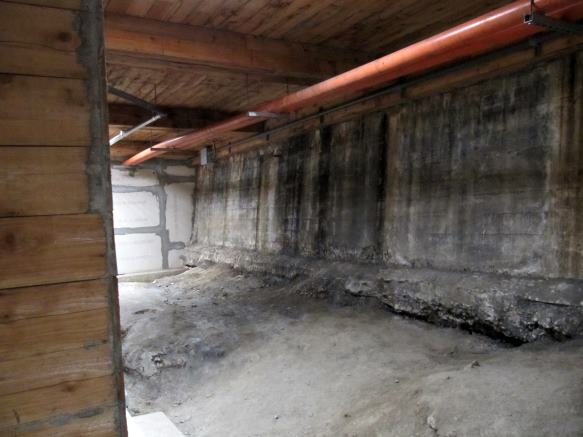
one of the original concrete forms can still be seen as a wall in the last remaining bit of underground sidewalk area
To solve this problem the streets were framed in large wooden forms running from 6 to 15 feet high depending on their location along the waterfront. With hundreds of locals working on the project it took just a couple weeks to build the forms. Next they filled them with concrete – bucket by bucket as cement trucks did not yet exist. Wooden pipes and water cannons sluiced a nearby hill called the hogback, filling the streets between concrete forms with tons of mud.
This project took only 6 months to build, but all that mud on land barely above the water table took years to dry. About 6 or 7 of them. In the meantime they built boardwalk sidewalks and streets. Businesses had entrances on the lower levels until sidewalks were made at street level. Eventually this was all paved over, leaving a system of tunnels at the old street level. Some places built new entrances on the new street level much like in old Seattle. Since most of these buildings were on pilings, many just raised the building. Without modern machinery it took the hard labor of people jacking the buildings up inch by inch with hand cranked equipment.
Throughout the prohibition era basements and attics made places for side businesses to flourish that had nothing to do with the street level business of a particular building. Later rats and hippies made the abandoned underground space their home. With such a large area accessible through the underground sidewalks and space under most buildings they had plenty of places to hide from police or exterminators.
Eventually one of the old buildings caught fire. The fire in one building created a backdraft through the underground and a fireball that exploded through the doors of a building at the other end of the block, setting it on fire as well. Following this event firewalls were installed throughout the underground and the free roaming days for hippies occupying the underground were gone. I’m not sure about the rats, but we didn’t see anything indicating the presence of rats anywhere we went on our Port Angeles Heritage Tour.
Later through the actions of one shortsighted mayor and three councilmen almost all of the Port Angeles underground got filled in. The efforts of a group of locals determined to preserve the town’s history saved one small street with one original building that has a basement that once housed a boxing club opening up into the only remaining section of the once widespread underground. The sidewalk above has skylights that let in an amazing amount of light, and while not original it was rebuilt the same fashion as the original with the wooden planking called shiplap underneath the concrete and skylights as close to the originals as restoration money would allow. The originals looked the same, but the shape of each individual square of glass let in even more light.
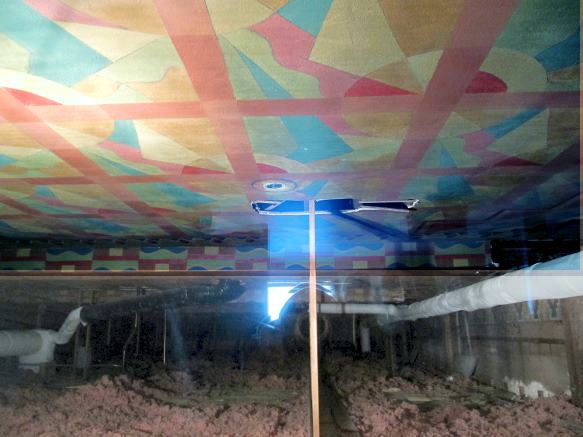
Port Angeles has history above street level as well as below, like this original painted ceiling of a movie theater above the insulation topped lower ceiling of the building’s current shop
Don the tour guide collects stories from older citizens of the town who lived through its history like the guy who watched the first plane land in town at age 6 when the wooden boardwalks still covered the streets. He couldn’t come up with the required money for a plane ride (a week’s salary for his dad,) but his fascination with that plane led to a long and successful air force career. He also had a story about a boy of 16 who was big for his age and the town bully. After injuring a boy for making fun of his sister, he would have ended up in prison had the cop who ran the boxing club not taken the troubled teen under his wing. He learned to channel his aggression into the boxing ring, and grew up to become a decorated town cop. He also had interesting tidbits like the auto mechanic shop who bought gray coveralls for 10 cents a pair and then rented them for 10 cents a day to the sailors who came to town on leave and were neither allowed to wear or carry civilian clothes off the ship, but could not visit the sort of places sailors in port most likely want to go while in uniform. They were paid all in $2 bills so that when the ships left town the townspeople would realize just how much money they had made from the navy’s presence and welcome them back.
The tour meets at the chamber of commerce and starts with a local history lesson seated comfortably upstairs in the bar next door. At the time I took this tour all money for the tour was collected in cash. Most parking in the town either costs money or is limited to 2 hours, but they have free 3 hour parking behind the chamber of commerce for tour participants and mall shoppers.
The tour takes a stroll through several blocks of the old part of town, in and out of a variety of buildings of historical interest. Most of these buildings have some seating, so those with limited abilities for walking long distances or standing for long periods of time do have places to rest along the way. We saw the underside of a jacked up building, a couple basements that were the street level of original buildings from before the raising of the road, and the upstairs of what was once a movie theater that still had some of the original equipment in the tin-lined projection room, which needed the fire-proofing due to the high heat of the lights and flammability of early film. Another upstairs once held a house of ill-repute, which had all the things people weren’t allowed during prohibition – alcohol, gambling, and prostitutes. It also had spy holes and a warning bell so employes and patrons could escape quickly in a raid and none were ever caught.
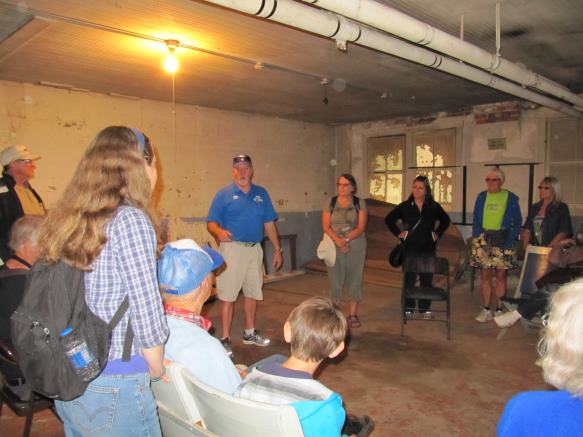
Don the guide telling people about the old boxing club, now a empty basement with access to the last underground sidewalk
This is a great tour and Don the guide is not only lively and interesting, but also largely responsible for saving the bit of the underground the town has left.


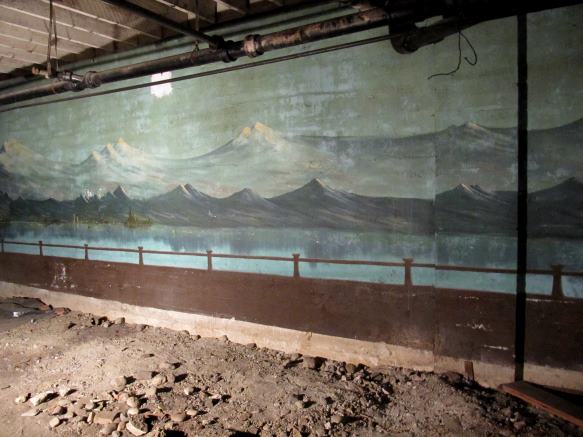
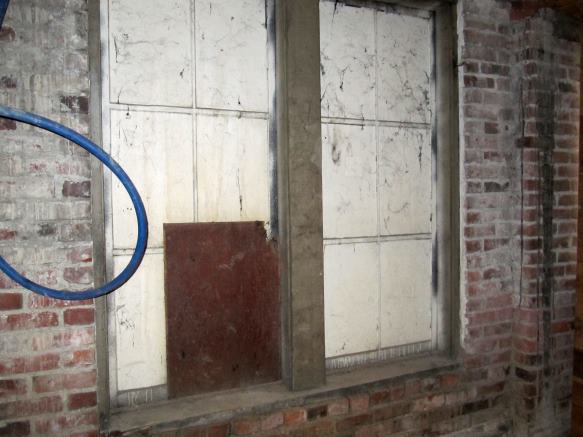
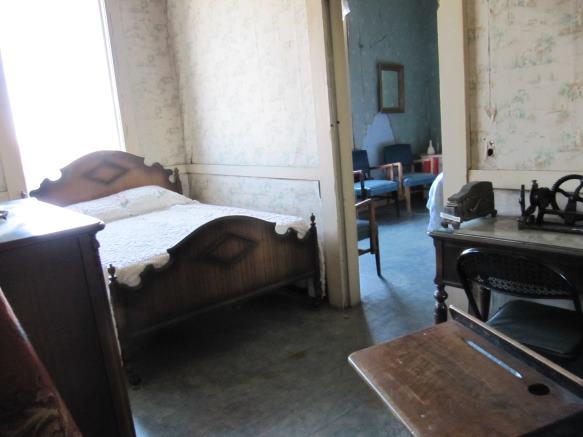
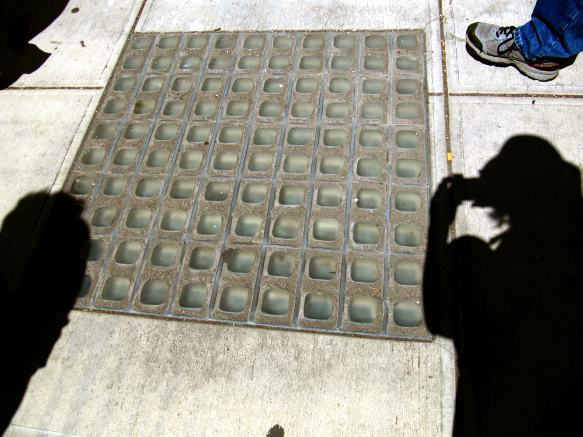
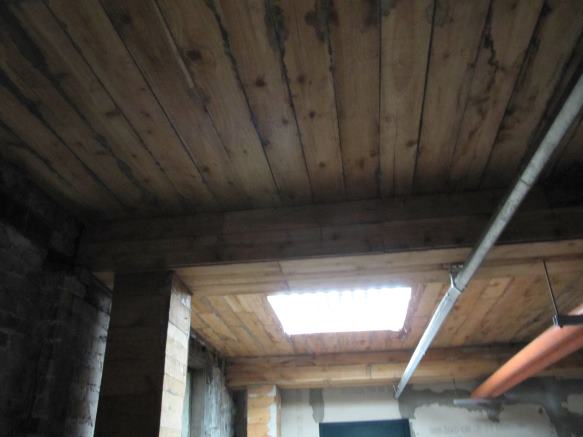
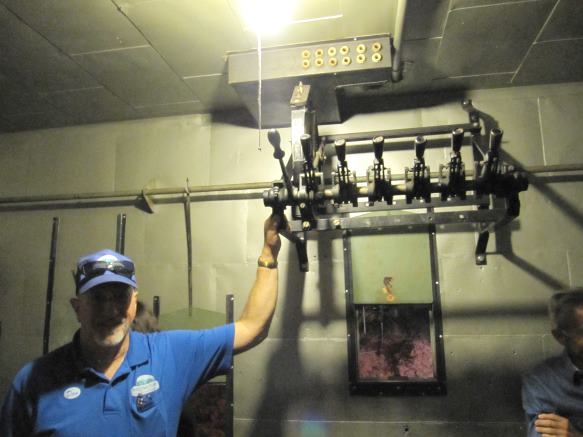
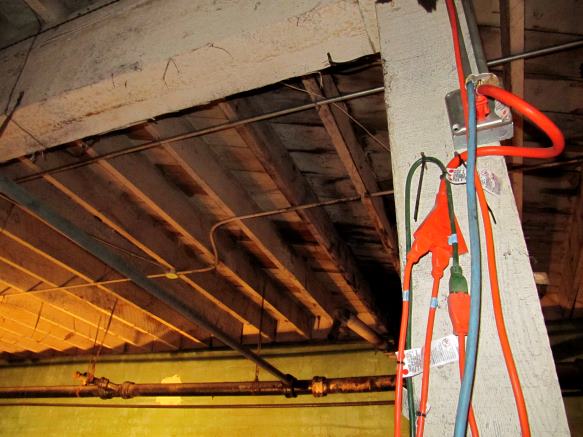
I’m absolutely amazed. I have been through Port Angeles, but I had no clue that it had an underground like Seattle. I haven’t been up to Port Angeles for so long, I can’t remember when I was there last. I DO love Hurricane Ridge though!
Hey, thanks for educating me, about my own state!
You’re welcome. I haven’t been to Hurricane Ridge in ages. Last time we were there there were a couple cars that had been parked there for several days while the owners went hiking….and when they returned they would find themselves stuck up there because marmots had chewed their radiator hoses.
If I ever visited Seattle I would love to go on that tour. It sounds like a lot of fun. Here in New York City, there are abandoned subway stations. Some of them visitors can tour. This post reminded me that I’ve always wanted to do that,
The underground in Seattle has more still open than what Port Angeles has left. It’s a good tour. The areas seen change over time as buildings change ownership and which ones allow access to their basements varies. I went on it years ago and the very start was all about the toilet. They had an original pre street raising toilet on display under the first building where the tour went. The abandoned subway stations in New York sound interesting too – a good blog topic for you! If either of us ever makes it to Paris, there’s tunnels under the city there as well. From mining the stones to build the city if I remember right.
Those tunnels in Paris sound fascinating to me, too. Maybe I can drag Milton to visit an abandoned subway station with me, but lately all he’s been thinking about is what films and plays we should see in the months ahead … safely above ground.
This is very interesting and I had never heard about it before either. It’s too bad they filled in most of it.
It is a total shame one mayor and a few council members could destroy so much of the town’s history. It makes me wonder how many other towns have abandoned undergrounds nobody knows anything about.
What was the purpose of filling it in? They must of had some reason to put all that work and material into it. It looks like a fun tour. I have always wanted to do the Seattle tour but haven’t done it yet. Lately I don’t like going to Seattle just because it’s so expensive to park though.
Apparently that particular mayor just didn’t like the underground. They used some sort of pipe repair as an excuse to fill it all in. A few council members went along with it and the general public was probably completely unaware it was even there since that was before they had the tours. We noticed skylights in the sidewalk in Snohomish, so there must be something there too, but I could not find any information on it.
Sounds interesting. Maybe if you could contact the mayor or who ever manages the sewer system in Snohomish they could tell you more about what’s down there. Could be already filled in though if they had a past mayor like Port Angeles did.
In Port Angeles the skylights are gone on the filled in areas.